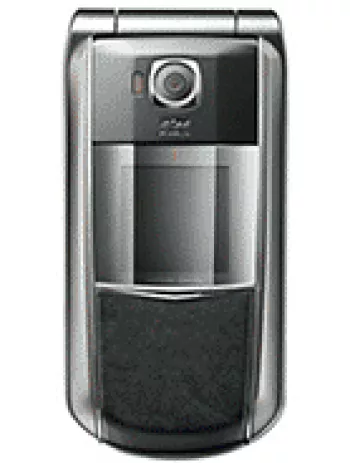
Introduction to Asus Memo Pad HD7
The Asus Memo Pad HD7, launched in mid-2013, marks a significant entry into the tablet market by Asus, offering a blend of performance and affordability. Despite being discontinued, it remains relevant for discussions about tablet evolutions and budget-friendly tech offerings. This article delves into its specifications, features, and the technology it offered at its peak.
Design and Build
Measuring 196.8 x 120.6 x 10.8 mm and weighing 302 grams, the Asus Memo Pad HD7 features a compact and durable design. Its slightly chunky frame was typical for tablets during its release time, providing a sturdy build easy to handle. The plastic chassis was available in an array of colors, including black, gray, white, pink, and green, catering to diverse aesthetic preferences.
Display
The device sports a 7-inch IPS LCD display, boasting a resolution of 800 x 1280 pixels. With a 16:10 aspect ratio and ~216 ppi pixel density, this screen configuration ensured decent clarity and color production. Though not a standout feature, the display was sufficient for casual multimedia consumption and normal daily use. Its modest screen-to-body ratio of ~59.9% provided adequate viewing space for its class at the time.
Performance and Software
At the heart of the Memo Pad HD7 is a Mediatek MT8125 chipset, built on a 28nm process. The quad-core 1.2 GHz Cortex-A7 processor coupled with a PowerVR SGX544 GPU offered satisfactory performance for everyday tasks such as web browsing, media playback, and light gaming.
The tablet came pre-installed with Android 4.2 Jelly Bean, upgradable to 4.2.2, along with Asus's Waveshare UI enhancements. Although certainly dated by current standards, the software was smooth and user-friendly for its time, complementing the hardware's capabilities.
Camera Features
The camera specifications include a modest 2 MP rear camera capable of recording 720p video at 30 frames per second. For selfies and video calls, it offers a basic VGA front camera. While the camera was not a focal point for the device, it sufficed for basic photographic needs and documentation.
Memory and Storage
The Memo Pad HD7 comes equipped with 8GB of internal storage and 1GB of RAM. Though limited, storage expansion is possible via a dedicated microSDHC slot, providing flexibility for users needing extra space for their apps and media files. The storage capacity was typical for entry-level devices of its era, catering well to the target budget-conscious audience.
Connectivity Options
Unfortunately, cellular connectivity is absent from this device. It standardizes wireless connectivity with Wi-Fi 802.11 b/g/n and Bluetooth 4.0 with A2DP support, ensuring basic communication and media sharing capabilities. The inclusion of GPS allows for essential navigation functions, although the lack of NFC and radio features are noticeable absences.
Battery Life
The device houses a 15 Wh Li-Po battery, offering up to 10 hours of multimedia usage on a single charge. This endurance aligns with its intent as a media consumption device rather than a professional workhorse. The battery life was aimed to comfortably support the device’s primary functions throughout a typical day of moderate use.
Features and Sensors
The tablet hosts an accelerometer and a compass, providing necessary navigational tools and enriching gaming and application experiences. Though not packed with sensors, these inclusions added value to users who appreciated simple functional features in their devices.
Audio and Multimedia
Sound features on the Memo Pad HD7 include a loudspeaker along with a traditional 3.5mm headphone jack, ensuring compatibility with most audio peripherals and a straightforward listening experience. The setup was adequate for personal media enjoyment without extravagant sound expectations.
Conclusion
The Asus Memo Pad HD7 was well-received for its good balance between price and performance. It stood out in the entry-level segment with reliable build quality, decent display, and expandable storage options. Although no longer in production, this device continues to be discussed for its affordability, ease of use, and meaningful features that catered well to the users’ basic needs during its time on the market. The Memo Pad HD7 serves as a testament to Asus’s commitment to delivering quality products in all market segments.
Key Features of Asus Memo Pad HD7 8 GB
- 7.0-inch IPS LCD Display
- Resolution of 800 x 1280 pixels
- Powered by Mediatek MT8125 Chipset
- Quad-core 1.2 GHz Cortex-A7 CPU
- 1GB RAM and 8GB Internal Storage
- Expandable storage via microSDHC card slot
- 2 MP Main Camera with 720p video recording
- VGA Front Camera for selfies
- Wi-Fi 802.11 b/g/n with Wi-Fi Direct
- Bluetooth 4.0 with A2DP
- Equipped with GPS
- microUSB 2.0 connectivity
- Long-lasting Battery Life with up to 10 hours talk time
- Sensors: Accelerometer, Compass
- Available in Multiple Colors: Black, Gray, White, Pink, Green
Asus Memo Pad HD7 8 GB - Key Disadvantages
- No cellular connectivity; lacks SIM slot, GPRS, and EDGE support.
- Discontinued status, may not receive further updates or support.
- Limited internal storage of 8GB, which may not be sufficient for heavy users.
- Only 1GB RAM, which could lead to slower performance with larger applications.
- Basic camera specifications: 2 MP main camera and VGA selfie camera, both offering low image quality.
- No NFC support, limiting contactless payment capabilities.
- No integrated radio.
- Relatively low screen-to-body ratio (~59.9%), resulting in noticeable bezels.
- Outdated Android version (4.2 Jelly Bean), which may not support newer applications or features.


View Also
More Phones
All Rights Reserved +14267 Phones © Mobilawy 2025

























